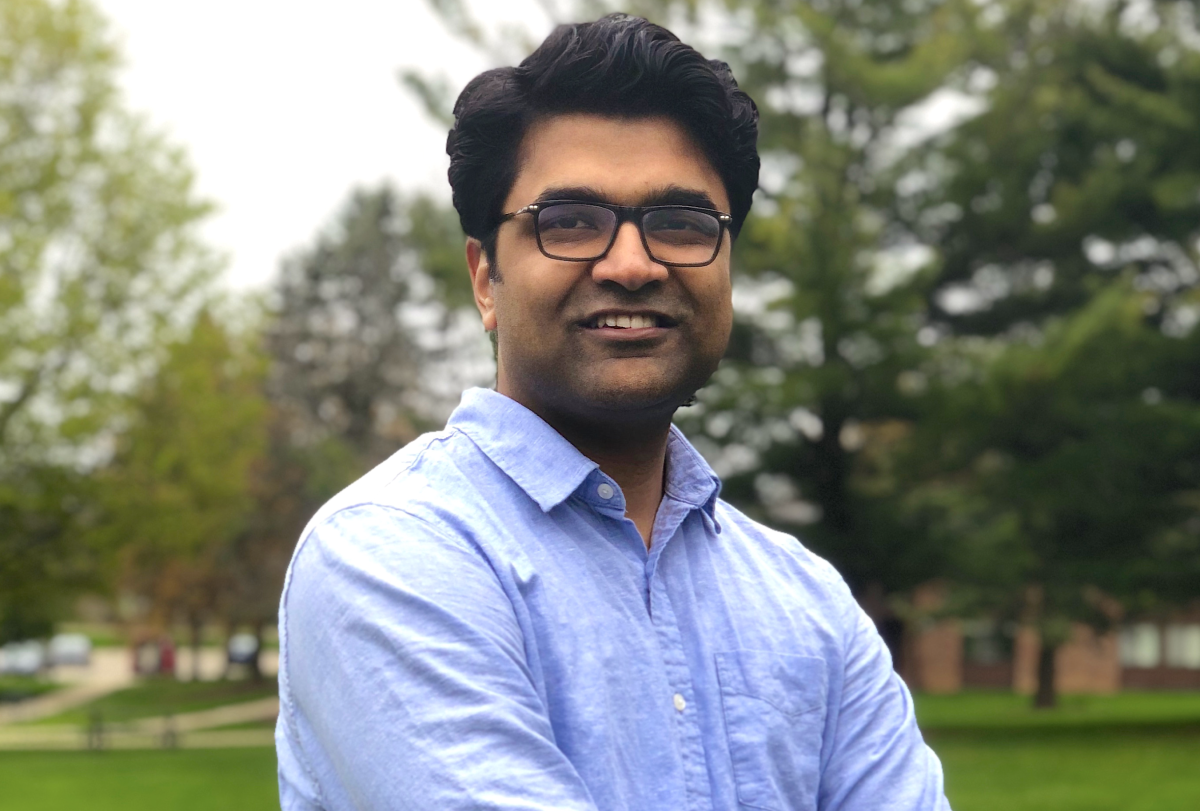Meet the Faculty - Karthik Desingh

Tell us about your journey to the University of Minnesota.
I am from India, and I came to the United States in 2013 for my Ph.D. program at Brown University. From Brown, I followed my Ph.D. advisor to the University of Michigan. I completed my Ph.D. in 2020 and went on to do my post-doctoral research at the University of Washington.
My journey to academia was inspired by the amazing teachers, advisors, and mentors I have had over the years. I enjoyed being a teaching assistant during my Ph.D. program. I also thoroughly enjoyed working with students and developing new research ideas into concrete systems. Toward the end of my Ph.D. program, I realized this is what I want to do long term, leading me to a post-doc at the University of Washington and then to the University of Minnesota.
I think the University of Minnesota is a fantastic place and an excellent fit for me. There is a significant robotics presence here, and I have known several experts in the field from here since my graduate school days. The new robotics program was also a big pull for me. The CS&E department has several research groups I look forward to collaborating with and being part of the interdisciplinary research efforts. I am really fortunate to be part of such an amazing ecosystem.
We would love to hear more about your research!
I am passionate about robotics and how it can make our lives better. My long-term goal is to build general-purpose robots that can care for and assist the aging and disabled population by autonomously performing various real-world tasks. To robustly execute various tasks, a general-purpose robot should be capable of seamlessly perceiving and manipulating a wide variety of objects in our environment. To achieve this long-term goal, my research aims to develop robot perception algorithms that can generalize over objects and tasks while accommodating perceptual uncertainty to support robust task execution in the real world.
Robots don’t “see” the world like us. They sense the world as a bunch of numbers through their sensors. My research focuses on developing algorithms that can make sense of these numbers so robots can perceive objects in the world to interact with them and accomplish tasks.
To understand the challenge, consider an example task of making an omelet. Various categories of objects are involved in this single task; eggs, butter, salt, pepper, omelet (brittle, semi-solid items, granular substances), fridge, dishwasher, cabinet (articulated objects), pan, fork, bowl (rigid objects), counter, stove (place/object locations), and wipes or cloth (deformable objects). To accomplish this seemingly simple task, a robot must perceive and interact with each of these categories of objects.
My research group will look into the spectrum of objects and task scenarios we generally encounter in our lives and build algorithms that will enable robots to interact with objects and perform tasks.
What do you hope to accomplish with this work? What is the real-world impact for the average person?
Between 2015 and 2050, the proportion of the world’s population over 60 years will nearly double from 12% to 22%, along with rapidly growing healthcare needs, according to recent surveys by the World Health Organization. To meet the healthcare demands, we have seen promising applications of robotics, especially in taking over the repetitive chores of nurses and doctors during the pandemic. Although these examples show potential ways for robots to assist people, they are limited in their capabilities and are not necessarily autonomous.
I hope that my work will produce robust algorithms that will enable robots to perform a set of essential tasks autonomously in the real world so that we can realize robots in our homes faster.
What are your goals for your first year as an assistant professor?
This first year I will focus on building my research group with students and finding connections with other labs in the Department and the University. I would like to set up my lab and get the robots to do some demonstrations. In the process, I would like to create an environment for the students to work together and break away from the isolation we all have had for the past few years.
If any students are interested in my research and want to get their hands on some cool robots, they should feel free to reach out to me.
I am also teaching a seminar course in spring 2023 on robotic perception and manipulation. The course will focus on discussing seminal papers in the field.
What do you do outside of the classroom for fun?
I like to go out into nature for a hike and do landscape photography. I also enjoy trying new restaurants and new types of foods.